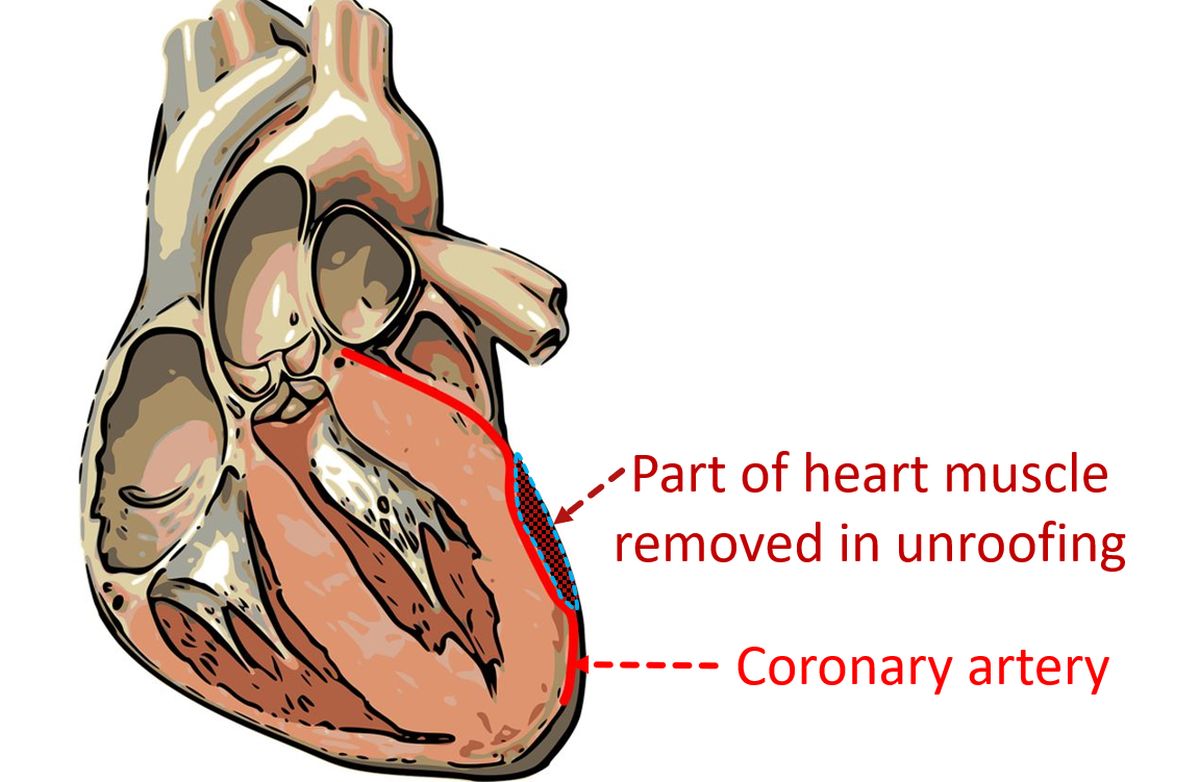What is unroofing of a myocardial bridge?
What is unroofing of a myocardial bridge?
Myocardial bridge is a segment of coronary artery which tunnels through the myocardium. Myocardium is the technical term for heart muscle. Coronary arteries are blood vessels supplying oxygenated blood to the heart muscle. Myocardial bridges are usually an incidental finding on coronary angiography, the X-ray imaging of blood vessels after injecting radiocontrast medication. But occasionally myocardial bridge can cause chest pain and heart attack. Though most myocardial bridges are left alone, sometimes a stent is inserted in the blood vessel when there is recurrent chest pain not relieved by medications. Rarely some of them may be bypassed by an operation as well. But stents which are tiny metallic spring like material used to prevent blood vessel closure, may get fractured by the powerful contraction of a myocardial bridge. Bypass may also fail sometimes. Another option is unroofing of the myocardial bridge.

When surgery for another condition with thickening of heart muscle known as hypertrophic cardiomyopathy is done, associated myocardial bridges are cut even in children. This gives relief of symptoms which were not responding to medications. In a study of 823 adults who underwent surgery for hypertrophic obstructive cardiomyopathy, some underwent unroofing of myocardial bridge while others underwent coronary artery bypass surgery. Some were left untreated as well, while others did not have a myocardial bridge. They found similar survival at 3 years in all the four groups. Computed tomography (CT scan) done after 1 year showed that there was no persistence of myocardial bridge after surgical unroofing. The study authors suggested that myocardial unroofing is the recommended treatment for myocardial bridge and unroofing when technically feasible may be preferable for long term outcome.
In another study using ultrasound probes inside the coronary arteries (intravascular ultrasound, IVUS) it was shown that there was restriction of the blood vessel even when the heart was relaxing. Earlier, it was thought that myocardial bridges produce problem only when the heart muscle contracts. Coronary computed tomography angiography (CCTA) done in these patients also confirmed these findings. This was a group of 111 patients who underwent surgical unroofing of myocardial bridge for symptoms which were not responding to medical treatment. They had limitation of physical activity before surgery, which improved after surgery.
After evaluating 50 patients who underwent myocardial unroofing for myocardial bridges resistant to maximally tolerated medical therapy, another group of authors concluded that it is the optimal treatment for isolated symptomatic myocardial bridges. These patients had undergone extensive multimodality investigation prior to surgery for detailed assessment of the need for surgery. There were no major complications or death in that report.
Different approaches for myocardial bridge unroofing have been described. They are surgeries with and without the use of heart lung machine, surgeries by splitting the breast bone and minimally invasive surgeries without splitting the breast bone. Robotic totally endoscopic unroofing of myocardial bridge without the use of heart lung machine has also been reported.

